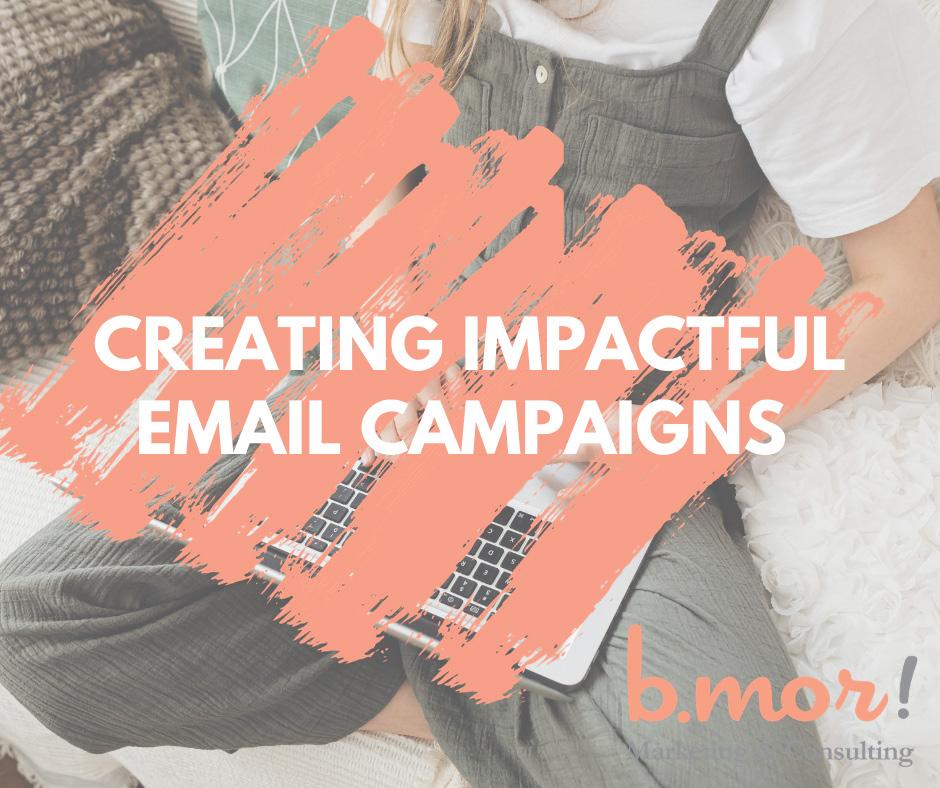
4 minute read
B.MOR
{ SHIFT+CONTROL }{ SHE HUSTLES TALKS }{ SHE HUSTLES TALKS{ B. MOR } } IMPACTFUL EMAIL MARKETING CAMPAIGNS
BY BREANN MORRIS
Advertisement
Contrary to popular opinion, the days of email marketing are not over. As a business owner, when budgeting and coordinating your marketing strategies, it’s essential to develop effective campaigns that attract, delight, and engage your consumers. As a result, these campaigns achieve a positive return on investment, while simultaneously building the brand voice that carries out the message your brand stands for. I believe one of the most effective ways to do this and to reach existing customers is through regularly scheduled email marketing campaigns.
This means of communication outperforms all online marketing strategies including PPC, SEO, and content marketing. In fact, on average, for every $1 you spend on email campaigns, you can expect a return of about $50.
One of the main factors to consider when crafting an impactful email marketing campaign is to create personalized, targeted messages to reach your different customer segments. Let’s take a closer look at this.
CUSTOMER SEGMENTATION
As an email marketer, segmenting your customer audience should be your top priority. Research shows that email marketing Key Performance Indicators (KPI’s) perform better in open rates, revenue, transactions, and leads when you segment your email list. Customer Relationship Management (CRM) software can be used to best optimize segmentation. A few ways you can segment your customer base is by industry, by sales cycle, or by company size. Segmenting your email subscribers by industry is an effective
B2B marketing strategy to identify where your brand can provide service to their brand and vise versa. Segmenting by sales cycle keeps your customers engaged throughout the year for unique promotional deals or free trial offers. Segmenting your email subscribers by company size helps increase response rates by determining if you are sending messages to a larger or small company. Whichever segmentation strategy you decide to use, the important thing is that you are segmenting. 9/10 email marketers don’t take the time to segment and as a result end up blasting out the same content to a variety of different groups and the messaging then becomes less impactful. Invest in segmenting and you’ll be sure to position your brand above the competition.
PERSONALIZED MESSAGES
Creating personalized messages is easier than you might think! Personalization is simply using customer data to integrate personalized messages into email campaigns. Almost every company has access to customer information and past purchase data that can be used towards CRM to discover valuable customer insights. For example, it could be as simple as beginning an email with “Dear (First name),” rather than “Dear (Valued Customer).” In fact, personalized email subject lines that address the reader by name can increase open rates by up to 16%. Accessing customer data also allows you to recommend certain products in the campaign based on their past purchases and likes/dislikes. The most recent research found that email marketing generates roughly $0.08 in revenue per email, but if you use personalization in your emails, you

can generate $20 ROI for every $1 invested. Fun fact: 70% of brands do not use personalization in their email marketing strategy. Don’t be like other brands, stand out by personalizing your communications!
Designing the Email the most important information at the top of the page. Using specific call to action messaging and bulleted lists will help divide up your content into sections to make the messaging clear and easy to understand for subscribers that skim the email. be both desktop and mobile friendly. Up to 61% of marketing emails are opened on a mobile device.
Presentation is everything, so once you know what message you want to relay, designing the email properly is an important step in making the message clear, concise, and enticing. Here’s some tips:
• Don’t include too many promotions, stick to focusing on communicating one message.
• Keep your email concise by reducing the length. According to a HubSpot blog, “Data suggests the ideal length of an email is between 50 and 125 words. Emails this length had a response rate above 50%. A similar study found emails with approximately 20 lines of text, or about 200 words, had the highest clickthrough rates. When in doubt, keep emails short and under 200 words.” These are just a few tips for creating an impactful email campaign. Not sure where to start? There’s lots of free templates on sites like MailChimp that will help you get started! Keep in mind that your customers will need to opt-in using a landing page on your new site such as MailChimp. Start by creating some achievable goals in terms of how many customers you want to add to your list and build slow and steady. When it comes to email marketing, it’s a process that you just have to trust!
• Don’t be afraid to add links as much as possible. Be sure to use this opportunity to link to a page on your website, a recent blog post, your brand’s social media accounts, and any other content that may be relevant for further engagement.











